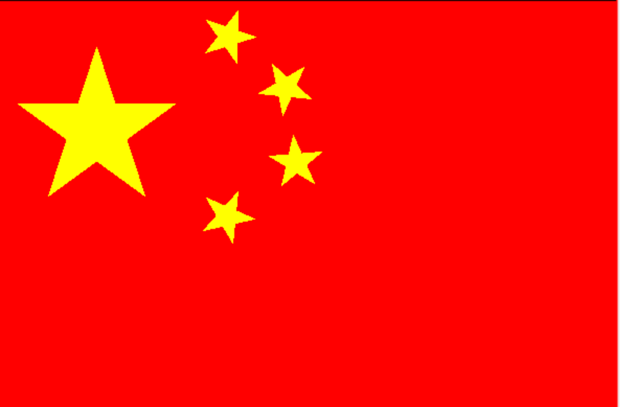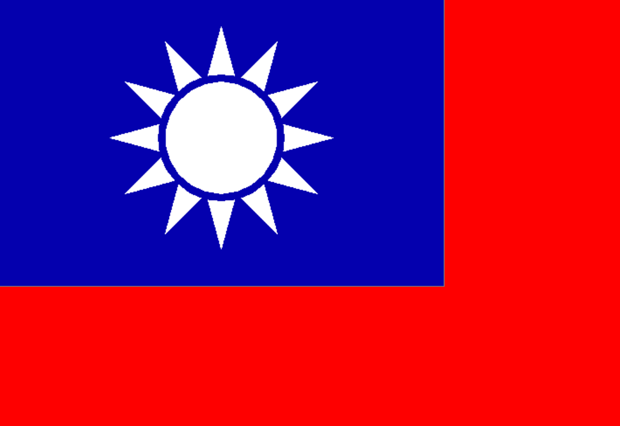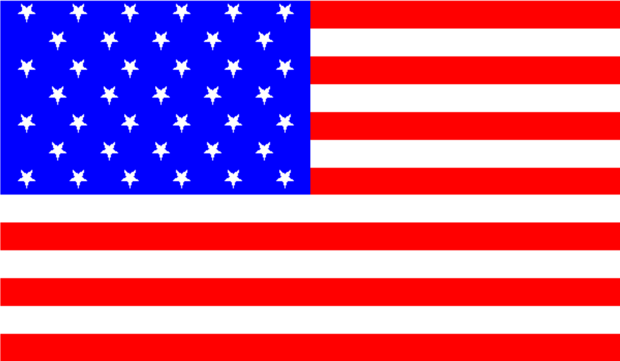How to draw the national flag with Python
May 31, 2021 Article blog
Table of contents
This article comes from the public number: Python Technology Author: Pieson Sauce
As a national symbol, the national flag reflects the country's identity and traditions. T he national flag originated in modern Europe, it is a national integrity, the sovereignty consciousness is enhanced after the inevitable product. In this article, we use Python to draw a few flags, and the Python library is familiar to everyone.
Red flag
The five-star red flag is the flag of the People's Republic of China, it is composed of four small yellow five-pointed stars around a large yellow five-pointed star, the background color is red, the implementation code is as follows:
turtle.setup(600,400,0,0)
turtle.bgcolor("red")
turtle.fillcolor("yellow")
turtle.color('yellow')
turtle.speed(10)
# 主星
turtle.begin_fill()
turtle.up()
turtle.goto(-280,100)
turtle.down()
for i in range (5):
turtle.forward(150)
turtle.right(144)
turtle.end_fill()
# 副星
turtle.begin_fill()
turtle.up()
turtle.goto(-100,180)
turtle.setheading(305)
turtle.down()
for i in range (5):
turtle.forward(50)
turtle.left(144)
turtle.end_fill()
turtle.begin_fill()
turtle.up()
turtle.goto(-50,110)
turtle.setheading(30)
turtle.down()
for i in range (5):
turtle.forward(50)
turtle.right(144)
turtle.end_fill()
turtle.begin_fill()
turtle.up()
turtle.goto(-40,50)
turtle.setheading(5)
turtle.down()
for i in range (5):
turtle.forward(50)
turtle.right(144)
turtle.end_fill()
turtle.begin_fill()
turtle.up()
turtle.goto(-100,10)
turtle.setheading(300)
turtle.down()
for i in range (5):
turtle.forward(50)
turtle.left(144)
turtle.end_fill()
turtle.hideturtle()
turtle.done()The results are as follows:

The flag of the day
The blue day flag is the national flag of the Republic of China period, the flag is blue to show the green sky, the flag is placed in a day pattern of fork light, the implementation code is as follows:
t.colormode(255)
rcblue=(4,0,174)
rcred=(254,0,0)
def ol(r):
na = 15 / 180 * math.pi
ol=2*r*math.cos(na)
ol=int(round(ol))
return ol
def loop(r):
t.fd(ol(r))
t.right(150)
def main0(a,b):
t.color(rcred)
t.penup()
t.goto(-a/2,b/2)
t.pendown()
t.begin_fill()
t.goto(-a/2,-b/2)
t.goto(a/2,-b/2)
t.goto(a/2,b/2)
t.end_fill()
t.penup()
t.goto(-a/4,b/4)
t.pendown()
def main1(a1,b1):
t.color('gray',rcblue)
t.penup()
t.right(90)
t.fd(b1/2)
t.left(90)
t.pendown()
t.begin_fill()
t.fd(a1/2)
t.left(90)
t.fd(b1)
t.left(90)
t.fd(a1)
t.left(90)
t.fd(b1)
t.left(90)
t.fd(a1/2)
t.end_fill()
t.penup()
t.goto(-a/4,b/4)
t.seth(0)
t.pendown()
def main2(r):
t.pensize = 20
t.color('white', 'white')
t.penup()
t.fd(r)
t.right(180 - 30 / 2)
t.pendown()
t.begin_fill()
for i in range(12):
loop(r)
t.end_fill()
t.penup()
t.goto(-a/4,b/4)
t.seth(0)
t.pendown()
def main3(r1,r2):
t.color(rcblue, rcblue)
t.begin_fill()
t.up()
t.right(90)
t.fd(r1)
t.left(90)
t.pd()
t.circle(r1)
t.end_fill()
t.penup()
t.goto(-a/4,b/4)
t.pendown()
t.color('white', 'white')
t.begin_fill()
t.pu()
t.right(90)
t.fd(r2)
t.left(90)
t.pd()
t.circle(r2)
t.end_fill()
t.penup()
t.goto(-a/4,b/4)
t.seth(0)
t.pendown()
def main(a,b):
a1 = a / 2
b1 = b / 2
r = a1 / 4
r2 = a1 / 8
r1 = b1 * 17 / 80
main0(a,b)
main1(a1,b1)
main2(r)
main3(r1,r2)
a=1020
b=680
t.setup(1100,700,100,0)The results are as follows:

Red-bottomed white cross flag
The red-bottomed white cross flag is the Swiss flag, which, unlike other countries, is square in shape and represents the country's policy of neutrality, with the following implementation code:
def draw_crossshaped(aTurtle, width=0, height=0, color=None):
aTurtle = turtle.Turtle()
aTurtle.hideturtle()
aTurtle.penup()
aTurtle.goto(30, 50)
aTurtle.begin_fill()
aTurtle.fillcolor(color)
for i in range(4):
aTurtle.pendown()
aTurtle.fd(width)
aTurtle.rt(90)
aTurtle.fd(height)
aTurtle.rt(90)
aTurtle.fd(width)
aTurtle.lt(90)
aTurtle.end_fill()
def draw_RQ(times=20.0):
width, height = 26 * times, 26 * times
window = turtle.Screen()
aTurtle = turtle.Turtle()
aTurtle.hideturtle()
aTurtle.speed(10)
aTurtle.penup()
aTurtle.goto(-width / 2, height / 2)
aTurtle.pendown()
aTurtle.begin_fill()
aTurtle.fillcolor('red')
aTurtle.fd(width)
aTurtle.right(90)
aTurtle.fd(height)
aTurtle.right(90)
aTurtle.fd(width)
aTurtle.right(90)
aTurtle.fd(height)
aTurtle.right(90)
aTurtle.end_fill()
draw_crossshaped(aTurtle, width=80, height=80, color='white')
window.exitonclick()The results are as follows:

Stars and Stripes
The Star-Spangled Banner is the flag of the United States and consists of two parts, with 50 white stars arranged on the blue bottom at the top left of the flag and 13 red-and-white stripes in the rest, as follows:
# 画条纹
def drawSquar():
turtle.color('black', 'red')
turtle.begin_fill()
for i in range(7):
turtle.forward(600)
turtle.left(90)
turtle.forward(350 / 13)
turtle.left(90)
turtle.forward(600)
turtle.right(90)
turtle.forward(350 / 13)
turtle.right(90)
turtle.end_fill()
# 画左上角的小矩形
def drawSmallsqure():
turtle.color('blue')
turtle.begin_fill()
turtle.left(90)
turtle.forward(350 / 2)
turtle.left(90)
turtle.forward(300)
turtle.left(90)
turtle.forward(350 * 7 / 13)
turtle.left(90)
turtle.forward(300)
turtle.end_fill()
# 画左上角的星星
def drawSrarts():
x = -10
y = 0
for k in range(4):
x = -15
for i in range(6):
turtle.goto(x, y)
turtle.color('white')
turtle.begin_fill()
for j in range(5):
turtle.left(144)
turtle.forward(20)
x -= 50
turtle.end_fill()
y += 350 / 13 * 2
x = -10
y = 350 / 13
for i in range(3):
x = -35
for j in range(5):
turtle.goto(x, y)
turtle.color('white')
turtle.begin_fill()
for k in range(5):
turtle.left(144)
turtle.forward(20)
x -= 50
turtle.end_fill()
y += 350 / 13 * 2
turtle.setup(0.8, 0.8, -100, -100)
turtle.speed(10)
turtle.pu()
turtle.forward(300)
turtle.left(90)
turtle.forward(350 / 2)
turtle.left(90)
drawSquar()
turtle.home()
drawSmallsqure()
turtle.home()
drawSrarts()
turtle.hideturtle()
turtle.done()The results are as follows:

That's what
W3Cschool编程狮
has to say about
how to paint the national flag with Python,
and I hope it will help you.